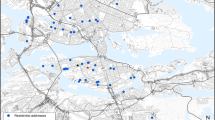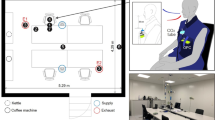Abstract
The paper presents the application of the microenvironment approach for collection of time budget data to assess exposure of people to indoor air pollution. The aim of the study was to objectively test the hypothesis that exposure to pollutants from combustion of low-grade cooking fuels is a significant risk factor for acute respiratory infection (ARI) in infants (0–12 months). One of the specific objectives of this study was to estimate, in the winter season, the integrated daily exposure of infants and their mothers to respirable suspended particles (RSPs) and carbon monoxide (CO). The daily-integrated exposure was estimated by splitting the day into parts called microenvironments identified by the mobility patterns of the infants and mothers. These were so determined such that the spatial variation in the concentration of pollutants during these microenvironments is believed to be relatively insignificant under the given conditions, based on results of past studies and subjective judgement. The time spent in these microenvironments by the infants and mothers was determined by preparing time budgets. Very little correlation was found between the two methods of measurement (recall method and direct observation using a stopwatch) for the total time spent in cooking or time actually near the stove. It was observed that infants in houses using kerosene were near the stove for a duration that is 68% of the total cooking duration, while for infants in wood-using households this duration is only 44% (on the basis of the recall method, these numbers are 84% and 63% respectively). The infants spent more time in the indoor noncooking microenvironment irrespective of the fuel and slum type.
This is a preview of subscription content, access via your institution
Access options
Subscribe to this journal
Receive 6 print issues and online access
$259.00 per year
only $43.17 per issue
Buy this article
- Purchase on Springer Link
- Instant access to full article PDF
Prices may be subject to local taxes which are calculated during checkout
Similar content being viewed by others
Author information
Authors and Affiliations
Corresponding author
Rights and permissions
About this article
Cite this article
MALHOTRA, P., SAKSENA, S. & JOSHI, V. Time budgets of infants for exposure assessment: a methodological study. J Expo Sci Environ Epidemiol 10, 267–284 (2000). https://doi.org/10.1038/sj.jea.7500089
Received:
Accepted:
Published:
Issue Date:
DOI: https://doi.org/10.1038/sj.jea.7500089
Keywords
This article is cited by
-
Exposure of infants to outdoor and indoor air pollution in low-income urban areas — a case study of Delhi
Journal of Exposure Science & Environmental Epidemiology (2003)



